Bicycle Trailer Project
This was a personal project I did the summer of my freshman year. Although I didn't have much coursework behind me freshman year, I felt comfortable designing in CAD and using the machines available to us. It turned out pretty well all in all and it has proven to be quite useful, especially around Allston Christmas here in Boston...
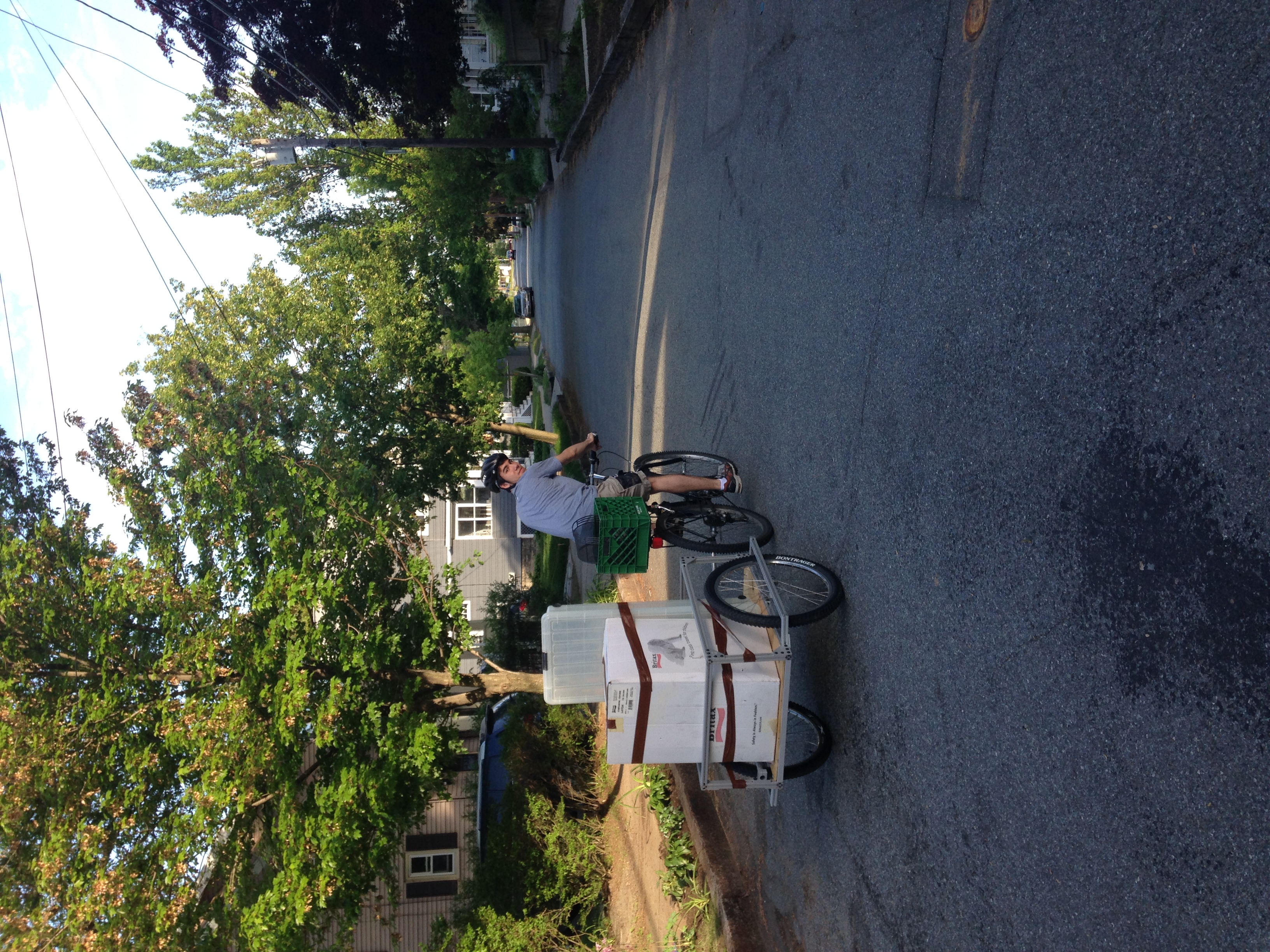
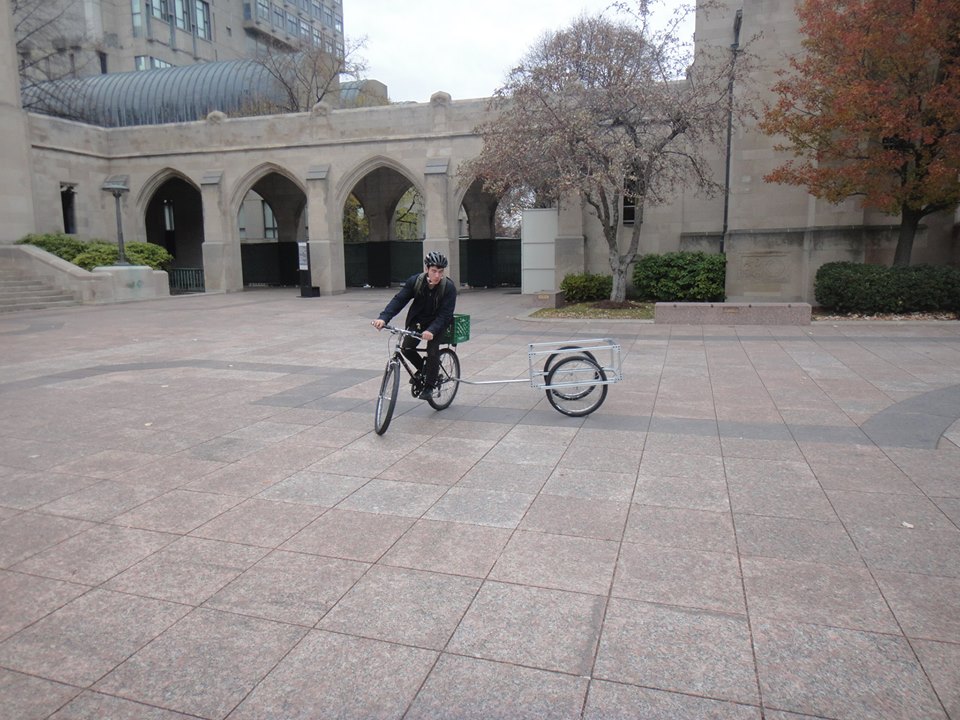
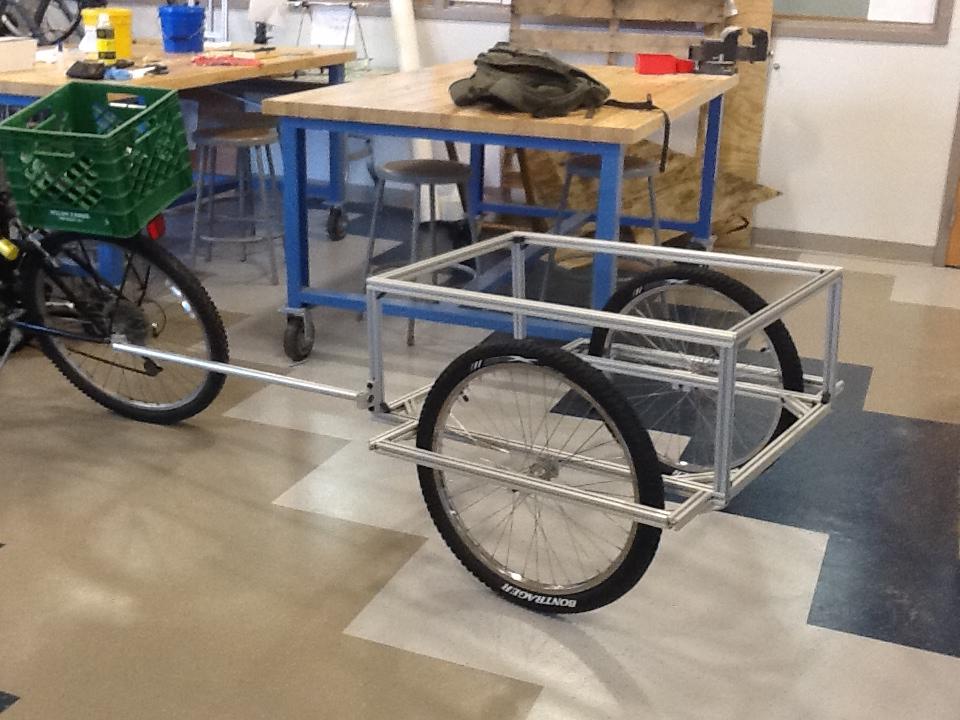
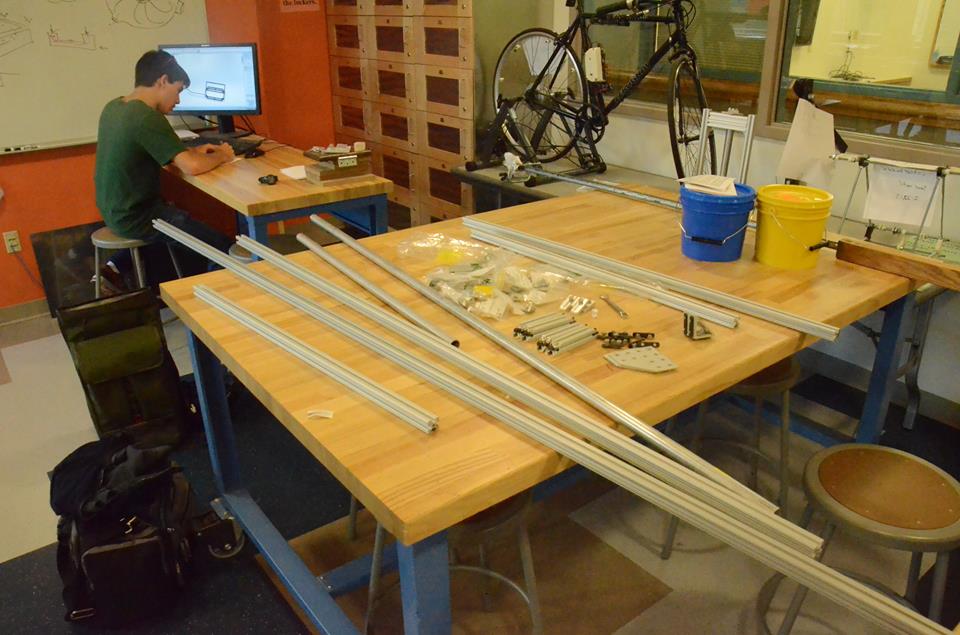
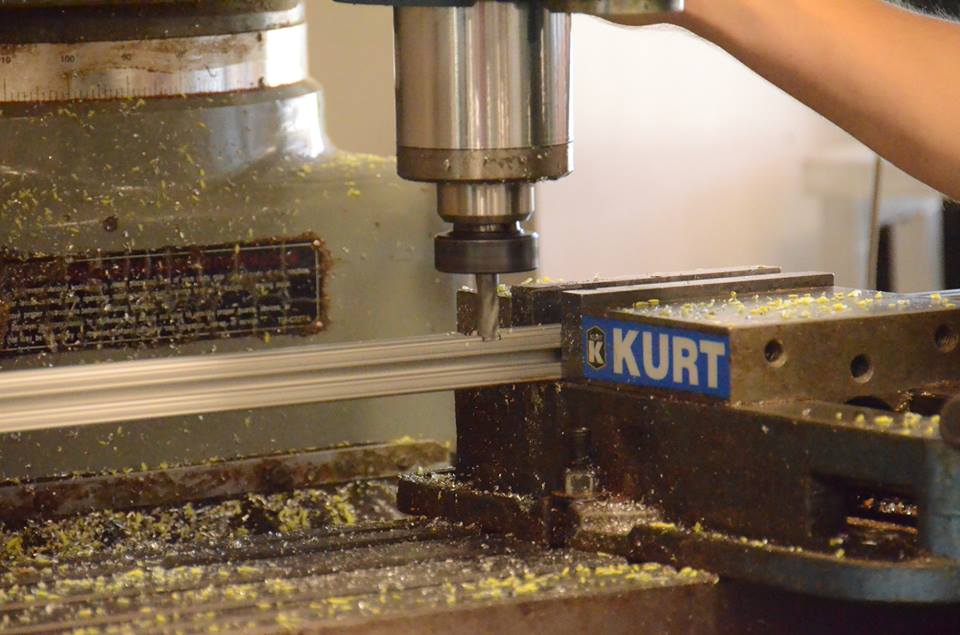



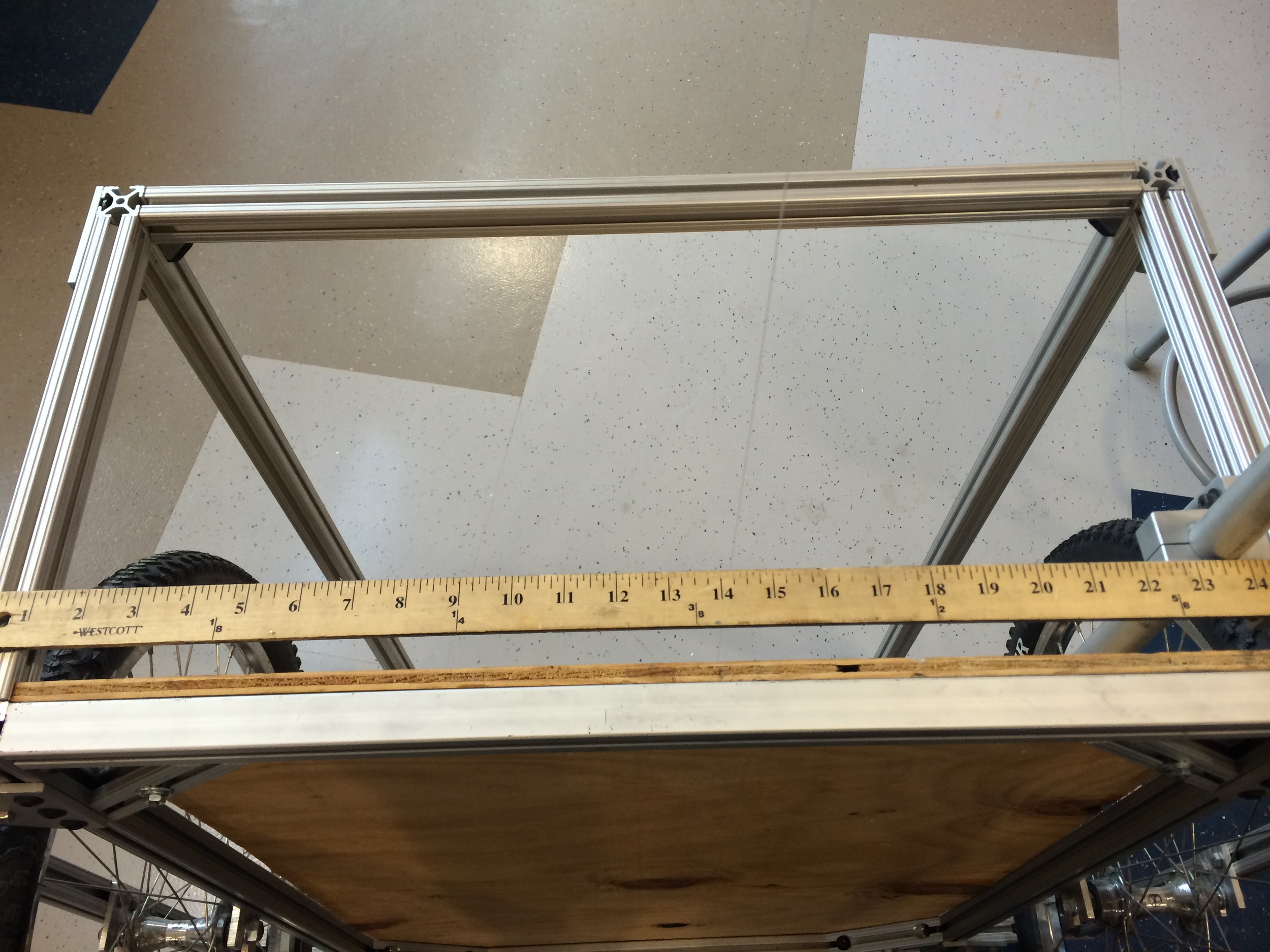

Motivation
As an avid urban and road cyclist, I wanted to create something to enhance the utility of my old mountain bike. As seen in the photos, I had already made one modification by mounting a green milk crate to the rear rack with a simple bolted aluminum bracket. I decided to design a bike trailer to haul larger items I often found myself carrying.
Design
The trailer's geometry is a rectangular prism. The members of the frame are made of 80/20 T-slotted framing and are fastened with standard 80/20 hardware. I wanted the frame to bolt together so that members could be switched out to experiment with different trailer geometries. Thread-lock is used to prevent vibrational loosening of the screws. The trailer hitch and the dropouts for the trailer wheels were both designed in SolidWorks and machined on an NC mill. The trailer hitch is bolted onto the bicycle's rear axle, and the arm is secured in the hitch with a custom pin I turned on a manual lathe. The floor is a single plywood board fastened to the frame with bolts. The trailer arm, or boom, is an aluminum tube bent at an angle so the trailer rides centered behind the bike. The boom is fastened to the trailer with pipe stanchions on the vertical members of the trailer.
Notes for Future Designs
The biggest design challenge for this project was determining the system for hitching the bike to the trailer. There are many different types of bike trailer hitches. Some attach to the seat post and curve over the wheel, but most that I have seen are pinned to a hitch bolted on the drive-side (left side) of the rear axle. This is the method that used. However, I noticed some problems with this system. These problems stem from the fact the the force applied to the trailer to pull it is not applied symmetrically, it is applied only to one side where the boom is attached. Unless the system is perfectly rigid, the boom and other components will flex whenever the bike accelerates due to bumps or sudden stops. The flexing of the boom and other components causes the trailer to turn slightly, and the trailer deviates from the course of the bike. The forces in the boom create a static stability for the trailer to return to its path following the bike, however the dynamic stability is not always negative; at times the trailer will oscillate back and forth feeding back on itself until the rider manipulates the controls to stop the oscillation (note: these oscillations are not severe enough to adversely affect the riders control or overstress the structure, they are merely a nuisance and it is possible the cyclic loading due to oscillations may lead to fatigue failure of components in the long run). There are two solutions to the problem: Alter the geometry or materials of the boom to increase rigidity and reduce flexing, or use a hitch that pulls from the center of the trailer. In future designs, I will aim to design a new hitch that connects to both ends of the rear axle of the bike and to the center of the trailer to reduce oscillations experienced by the trailer. This will increase safety and enable the rider to carry larger loads